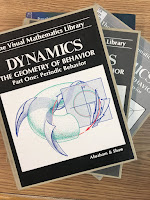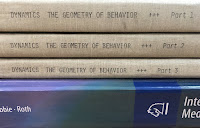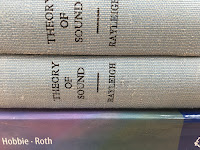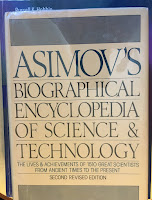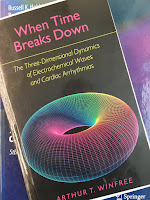Gingl, Z., L. B. Kiss, and F. Moss (1995) “Non-Dynamical Stochastic Resonance: Theory and Experiments with White and Arbitrarily Coloured Noise,” Europhysics Letters, Volume 29, Pages 191–196.The paper is interesting (despite the annoying British spelling), and I reproduce part of the introduction below.
In the last decade’s physics literature, stochastic-resonance (SR) effect has been one of the most interesting phenomena taking place in noisy non-linear dynamical systems (see, e.g., [l-14]. The input of stochastic resonators [12] (non-linear systems showing SR) is fed by a Gaussian noise and a sinusoidal signal with frequency f0, that is, a random excitation and a periodic one are acting on the system. There is an optimal strength of the input noise, such that the system’s output power spectral density, at the signal frequency f0, has a maximal value. This effect is called SR. It can be viewed as: the transfer of the input sinusoidal signal through the system shows a “resonance”vs. the strength of the input noise. It is a very interesting, and somewhat paradoxial effect, because it indicates that in these systems the existence of a certain amount of “indeterministic ”excitation is necessary to obtain the optimal ” “deterministic response. There are certain indications [2,13,14] that the principle of SR may be applied by nature in biological systems in order to optimise the transfer of neural signals.
Until last year, it was a common belief that SR phenomena occur only in (bistable, sometimes monostable [10] or multistable) dynamical systems [1-14]. Very recently, Wiesenfeld et al. [15] have proposed that certain systems with threshold-like properties should also show SR effects.
We present here an extremely simple system, invented by Moss, which displays SR. It consists only of a threshold and a subthreshold coherent signal plus noise as shown in fig. la). It is not a dynamical system, instead there is a single rule: whenever the signal plus the noise crosses the threshold unidirectionally, a narrow pulse of standard shape is written to a time series, as shown in fig. lb). The power spectrum of this series of pulses is shown in fig. 1c). It shows all the familiar features of SR systems previously studied [l, 2, 7, 16], in particular, the narrow, delta-like signal features riding on a broad-band noise background from which the signal-to-noise ratio (SNR) can be extracted. This system can be easily realized electronically as a level-crossing detector (LCD). There is a simple and very physically motivated theory of this phenomenon (due to Kiss), see below. Other, more detailed studies of various aspects of threshold-crossing dynamics have been made by Fox et al. [17], Jung [18] and Bulsara et al. [19].
Figure 1 in their paper is our Figure 11.50. It is an excellent figure, although I don’t know why they didn’t adjust the time axes so that the pulses in b) are aligned precisely with the signal crossings in a). The axes are almost correct, but are off just enough to be confusing, like when the video and audio signals are off by a fraction of a second in a movie or TV show.We have experimentally realised and developed this simple SR system and carried out extensive analog and computer simulations on it. The theory of Kiss has been verified for the case of white and several sorts of coloured noises. Until now, the description of this new SR system, its physical realisation and the original theory have not appeared in the open literature, so in this letter we shall describe the new system and its developments made by us, present the outline and the main results of the theory and finally show some interesting experimental results…
The Gingl et al. paper is short and highly cited (over 200 citations to date, according to the Web of Science). However, it is not cited nearly as often as another paper published by Kurt Wisenfeld and Moss that same year:
Wisenfeld K. and F. Moss (1995) “Stochastic Resonance and the Benefits of Noise: From Ice Ages to Crayfish and SQUIDs,” Nature, Volume 373, Pages 33–36.This paper, with over 1000 citations, reviews many applications of stochastic resonance.
Noise in dynamical systems is usually considered a nuisance. But in certain nonlinear systems, including electronic circuits and biological sensory apparatus, the presence of noise can in fact enhance the detection of weak signals. This phenomenon, called stochastic resonance, may find useful application in physical, technological and biomedical contexts.Wisenfeld and Moss discuss how the crayfish may use stochastic resonance to detect weak signals with their mechanoreceptor hair cells.
Frank Moss (1934-2011) was the founding director of the Center for Neurodynamics at the University of Missouri at St Louis. Click here to read his obituary (he died two years ago today) in Physics Today, and click here to read a tribute to him in a focus issue of the journal Chaos.


